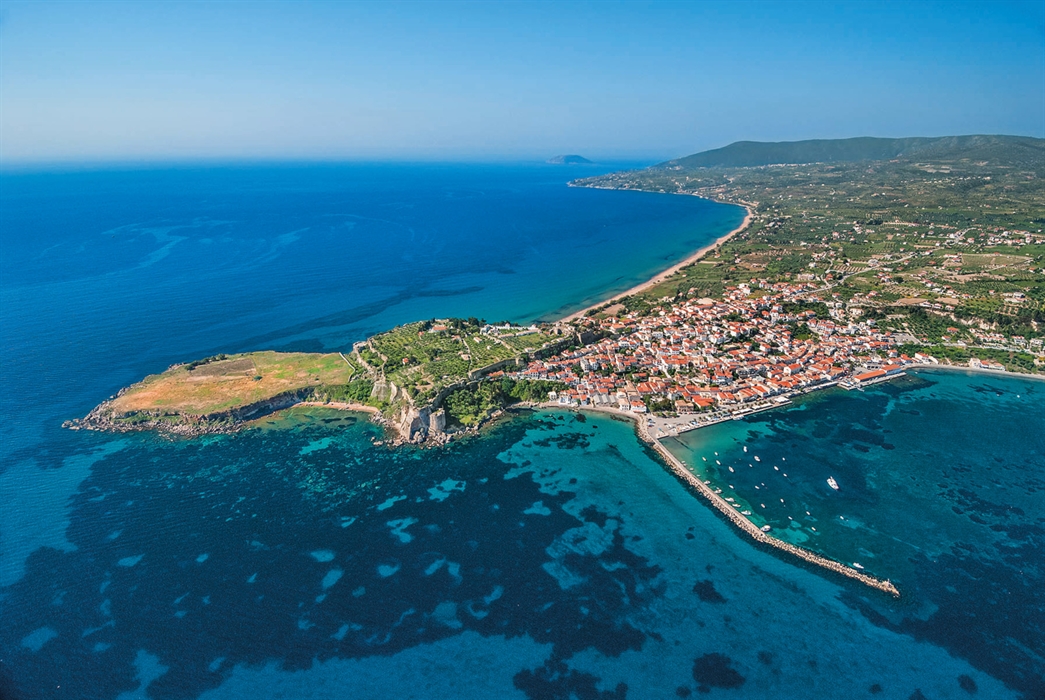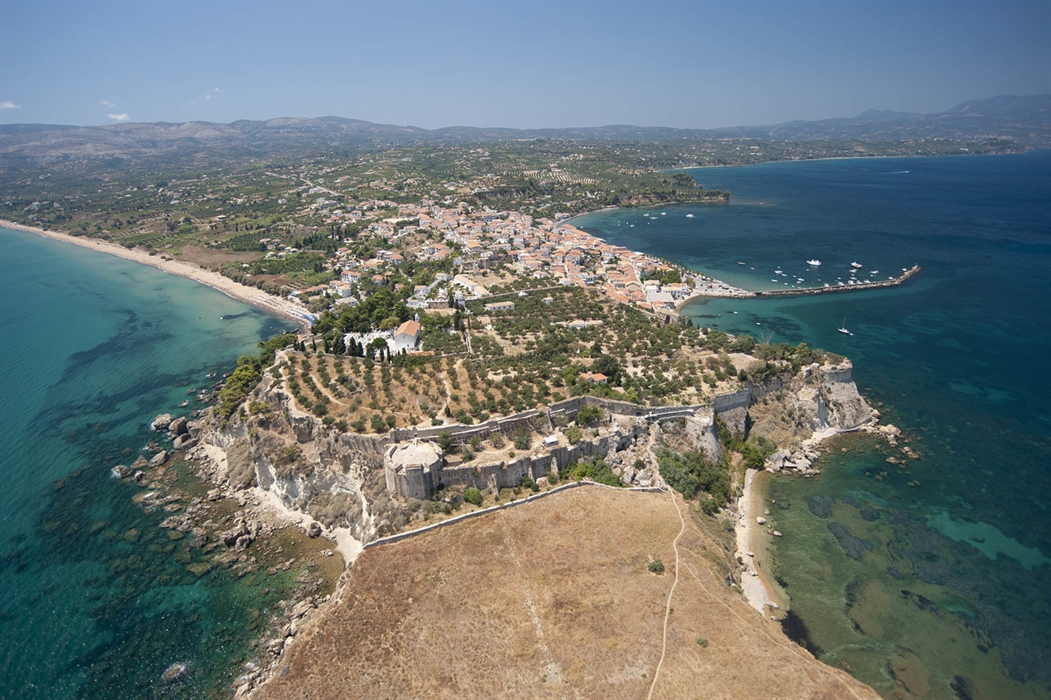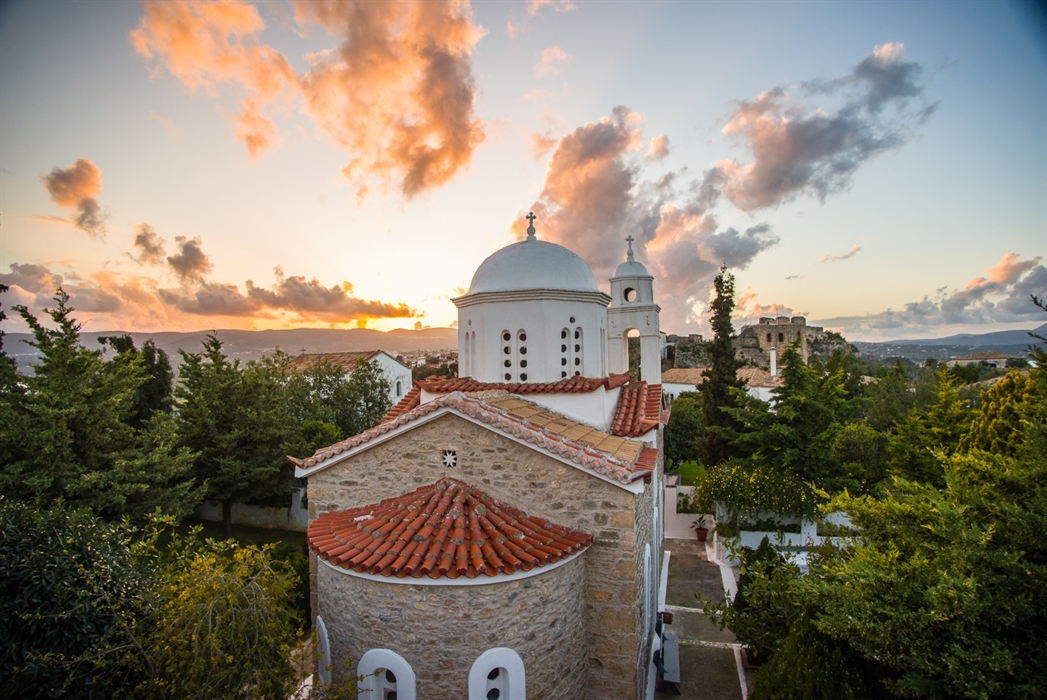Koroni castle
This is one of the most famous castles in Greece, and deservedly so. It covers 62 acres on a low peninsula, close to the beautiful settlement of Koroni. While it is less complete than the castles at Methoni and Navarino, it is still very atmospheric and beautiful, with lush greenery, gardens and, of course, stunning views.
Koroni castle is one of the most famous in Greece, and deservedly so. It covers 62 acres on a low peninsula, close to the beautiful settlement of Koroni, and you can feel echoes of the past surrounding you as you explore. Not surprisingly given the castle’s role in history, there are great views out over towards the Messinian Gulf with the mountain peaks of Taygetos visible in the background.
The fortified town of Corone, as the Venetians called it, was of great strategic importance. In fact, together with the Venetian castle-town at Methoni, it controlled the trade routes to and from the East which gave rise to the nickname "the Eyes of Venice”. Both of them flourished from the 13th to the 17th century and their ports played an important role in the development of trade with the East.
The castle was built during the Byzantine period on the site where, according to Pausanias, the ancient Messinian city of Asine was located. It was expanded in the 13th century, during the 1st period of Venetian rule. A large enclosure was then added to the east, and strong walls and a double bastion were built in the north east to provide protection for the sea-facing side of the fortress. You can still see large sections of the walls which originally stretched for 1200m, and on the northeast edge of the fortress there are two imposing round towers facing out to the coast.
Over the years, the fortress passed from the Venetians, to the Ottomans (1500-1685), back to the Venetians again, marking the beginning of the Second Venetian Empire (1685-1715). With the second period of Ottoman rule, the castle was once more back in Turkish hands by 1715. In 1770 it was besieged, bombarded and heavily damaged by the Russian fleet, but it was retained by the Ottomans until 1828 when it was handed over to general Maison, head of the French expeditionary force in the Peloponnese shortly after the Battle of Navarino. The central entrance to the castle is through a large, square-shaped gate. There were two other gates in the past, one on the east side and one on the south-west, near Panagia Eleistria. Parts of buildings from ancient times were used as building materials for the wall.
The original Byzantine fortress occupied the highest point, the acropolis, where the monastery of Timios Prodromos, founded in 1920, is located. Along the northern side towards the port and the Messinian Gulf, the wall rises vertically. At the NE end, the two imposing round towers are formed on the coast. According to Kevin Andrews this section is the best example of the plasticity of Venetian fortress architecture in Greece.
In the eastern precinct of the castle there is an admirable architectural ensemble of religious buildings of different eras and denominations. On the ruins of the temple of Apollo are those of an early Christian basilica, in contact with the dome of the three-aisled basilica of Agia Sophia (8th-9th century). On the side of the complex is the monastery of the Old Calendarists, dedicated to Agios Ioannis, founded at the beginning of the 20th century. Nearby is the 17th-century church of Agios Charalambos, with a bell tower built on the base of a demolished minaret. The church was originally dedicated to St. Rocco, patron saint against epidemics, after the Turkish occupation of Koroni it became a mosque and was converted back to Christianity after 1829.
Other sights in the eastern precinct are the ruins of a small Ottoman bath, a powder magazine from the Second Venetian occupation and remains of a 19th century French barracks building.
Panagia Eleistria
Take the time to go to the southwest end of the peninsula where, in amongst well-tended gardens and with a wonderful view of the Ionian Sea, you will see the church of Panagia Eleistria, the patron saint of Koroni. This church is an important pilgrimage site in Messinia. The miraculous, as it is considered, icon of the Virgin Mary was found in 1897 and is a composition of three sculptural statuettes: The Crucified, the Virgin Mary of the Vrephokratousa and the Evangelist Luke. The inauguration of the three-storey church took place in 1900.
Location
Find the destination on the interactive map below.
Categories
Weather
Σχετικό περιεχόμενο χρηστών (UGC)
Ενημερωθείτε για ενδιαφέροντα θέματα γύρω από τον προορισμό μέσα από το περιεχόμενο των χρηστών μας
Discover 7 hidden gems of the Peloponnese
Many of you may have already visited some of the most renowned attractions…
TOP 10 archaeological museums in the Peloponnese
Olympia, Mycenae, Epidaurus, Diros Cave, Ancient Corinth, Messene and…
TOP 10 Castles in the Peloponnese
Castles galore! Mystras, Monemvasia, Palamidi, Methoni, Koroni,…
Newsletters
- About us
- FAQ's
- Map
- Tourism information centers
- Disclaimer
- Sitemap
- Our brand
- Media roum
- Adding your bussiness
- Corporate
- MICE

Peloponnese. Greece beyond the obvious





Design and creation from Cosmote
Marinas and Moorings
Diving centers
Get inspired
- Media gallery
- Blog
- The Peloponnese in the media
- Your feedback
- Users' general content
- Users' local products
- Users' events content
- Ask a local
More
- Accommodation
- Travel agencies
- Restaurants
- Services
- Destinations Map
- Weather
- Public transport
- Events
- Frequently asked questions
- Useful phones
- B2B
- Destination Data
- Contact



